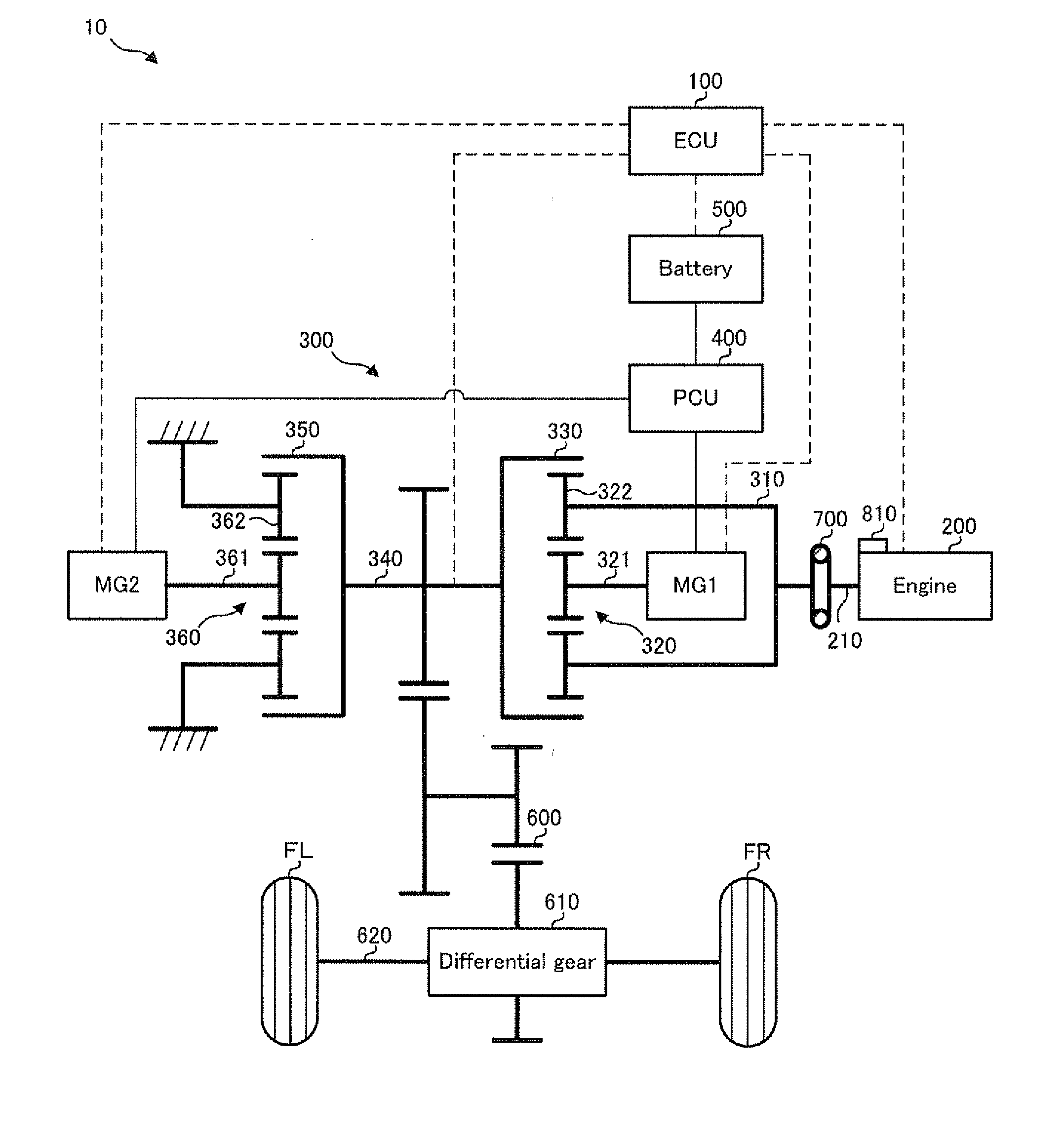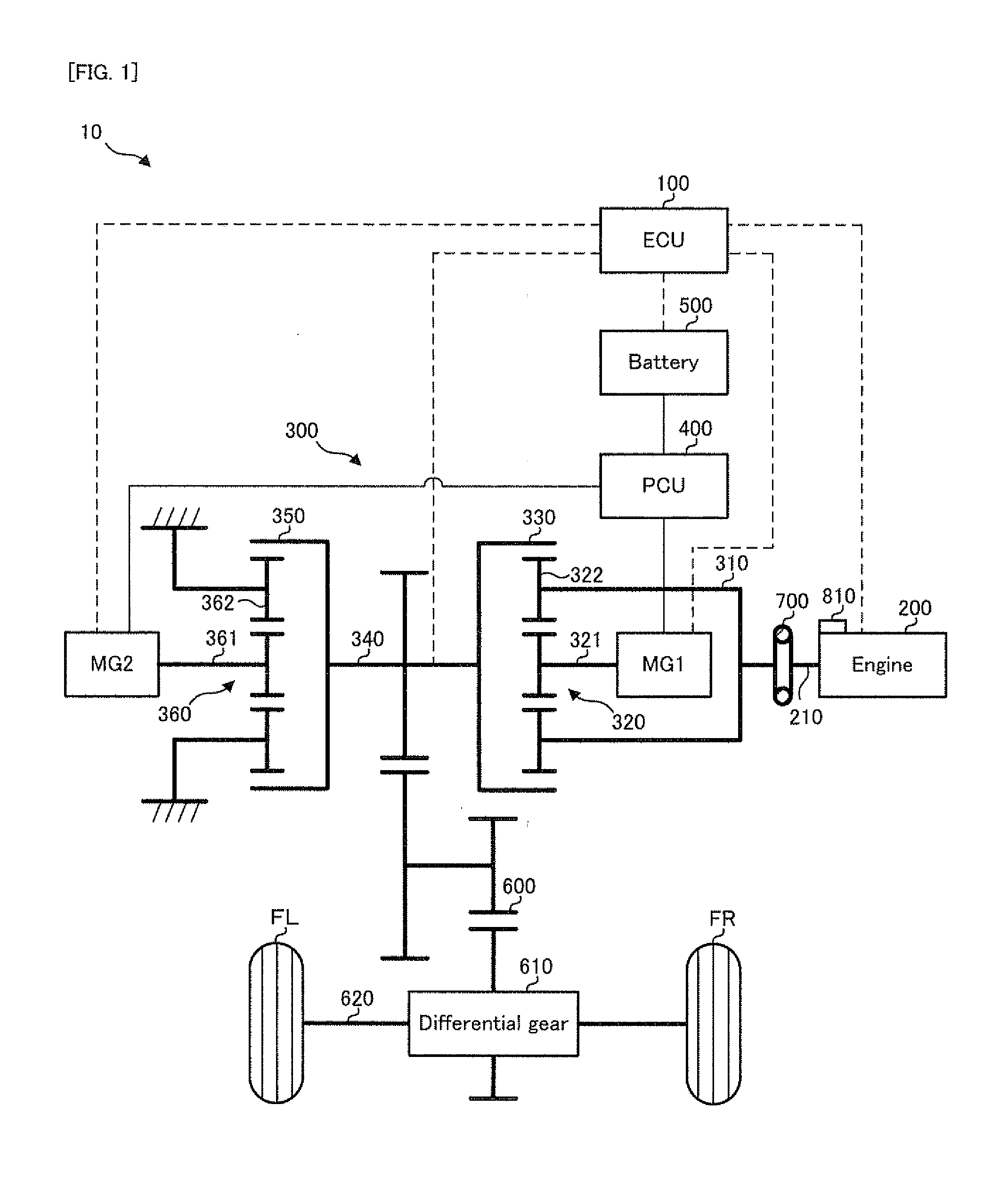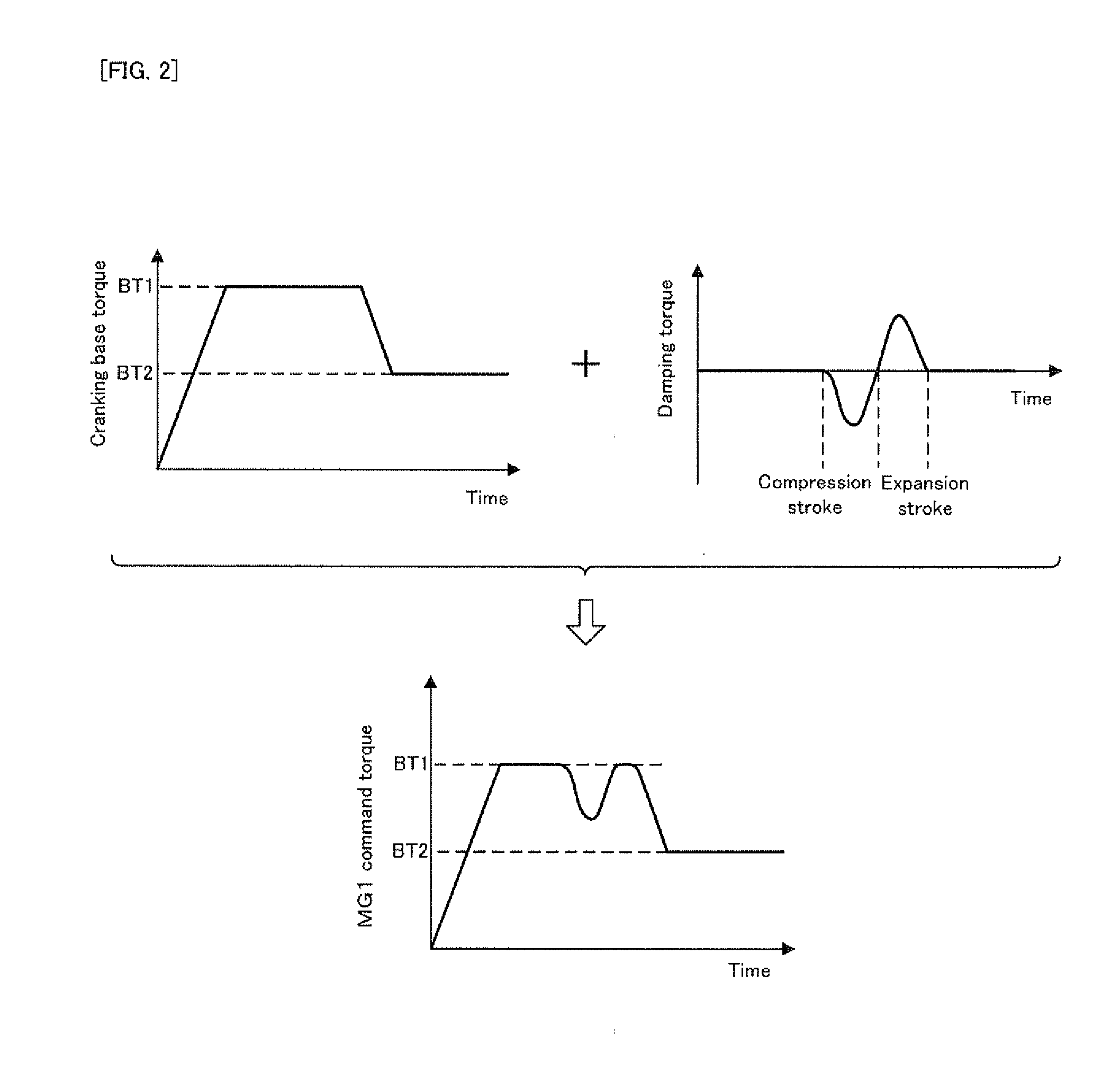Engine starting apparatus
a technology for starting equipment and engines, which is applied in the direction of engine starters, machines/engines, transportation and packaging, etc., can solve the problems of difficult miniaturization of batteries and likely increase of motor power consumption, and achieve the effects of reducing the rated output of batteries, reducing motor power consumption, and miniaturizing batteries
- Summary
- Abstract
- Description
- Claims
- Application Information
AI Technical Summary
Benefits of technology
Problems solved by technology
Method used
Image
Examples
first embodiment
[0030]An engine starting apparatus in a first embodiment will be explained with reference to FIG. 1 to FIG. 4.
[0031]Firstly, the entire configuration of a hybrid vehicle to which the engine starting apparatus in the embodiment is applied will be explained with reference to FIG. 1.
[0032]FIG. 1 is a schematic configuration diagram conceptually showing the configuration of the hybrid vehicle in the embodiment.
[0033]In FIG. 1, a hybrid vehicle 10 in the embodiment is provided with an electronic control unit (ECU) 100, an engine 200, a motor generator MG1, a motor generator MG2, a power dividing mechanism 300, a power control unit (PCU) 400, a battery 500, a transmission mechanism 600, a differential gear 610, a transmission shaft 620, a damper 700, a crank position sensor 800, and drive wheels FR and FL.
[0034]The ECU 100 is provided with a central processing unit (CPU), a read only memory (ROM), and a random access memory (RAM) or the like, and it is an electronic control unit capable o...
second embodiment
[0076]An engine starting apparatus in a second embodiment will be explained with reference to FIG. 6 and FIG. 7.
[0077]FIG. 6 is a flowchart showing a flow of controlling the cranking base torque in the second embodiment. FIG. 7 is a graph showing one example of a time-dependent change in the cranking base torque and the number of revolutions of the engine in the second embodiment. Incidentally, in FIG. 6, the same steps as those in the control of the cranking base torque in the first embodiment shown in FIG. 4 will carry the same step numbers, and the explanation thereof will be omitted as occasion demands.
[0078]In FIG. 7, the engine starting apparatus in the second embodiment is configured to be different from the engine starting apparatus in the first embodiment described above in the point of controlling the cranking base torque to start to be reduced from the first torque value BT1 at a time point Tcs1 at which the piston of the engine 200 reaches the compression stroke for the ...
third embodiment
[0084]An engine starting apparatus in a third embodiment will be explained with reference to FIG. 8 and FIG. 9.
[0085]FIG. 8 is a flowchart showing a flow of controlling the cranking base torque in the third embodiment. FIG. 9 is a graph showing one example of a time-dependent change in the cranking base torque and the number of revolutions of the engine in the third embodiment. Incidentally, in FIG. 8, the same steps as those in the control of the cranking base torque in the first embodiment shown in FIG. 4 will carry the same step numbers, and the explanation thereof will be omitted as occasion demands.
[0086]In FIG. 9, the engine starting apparatus in the third embodiment is configured to be different from the engine starting apparatus in the first embodiment described above in the point of controlling the cranking base torque to be greater than the first torque value BT1 in at least one portion of a period in which the piston of the engine 200 is in the compression stroke for the ...
PUM
 Login to View More
Login to View More Abstract
Description
Claims
Application Information
 Login to View More
Login to View More - R&D
- Intellectual Property
- Life Sciences
- Materials
- Tech Scout
- Unparalleled Data Quality
- Higher Quality Content
- 60% Fewer Hallucinations
Browse by: Latest US Patents, China's latest patents, Technical Efficacy Thesaurus, Application Domain, Technology Topic, Popular Technical Reports.
© 2025 PatSnap. All rights reserved.Legal|Privacy policy|Modern Slavery Act Transparency Statement|Sitemap|About US| Contact US: help@patsnap.com



